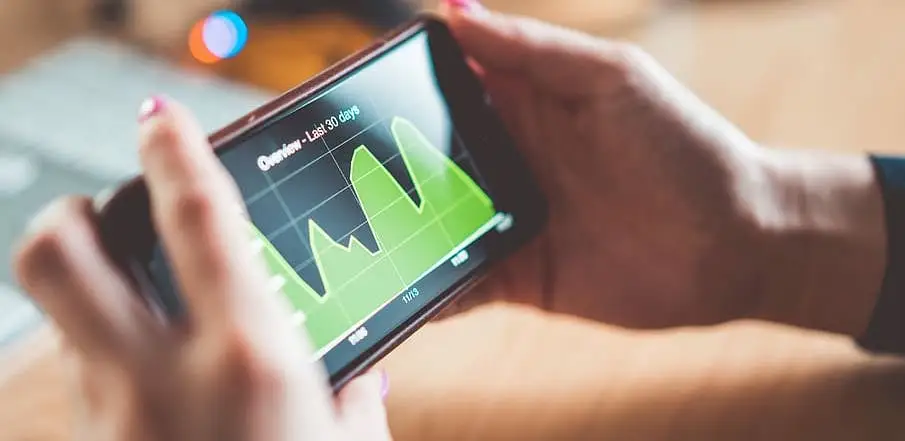We are in front of the time where we receive too many communications from different companies, added to our own from friends and other people.
On average a person receives 20 emails a day, 3 SMS, 436 messages per WhatsApp and not to mention the 5,000 advertising impacts we receive per day.
What do we get at the end of the day? Apart from the fact that we are over-communicated and that a person cannot even consider retaining all the impact of the advertising he or she receives per day, we can see that we have an immense competition to impact our target audience.
Bearing this in mind, the means by which we try to impact our target is vital. Including Display, Facebook, Instagram, YouTube, LinkedIn, TikTok, Twitter, Snapchat, among other social networks in the same bag as television and other offline branding actions, after these 5,000 advertising impacts, counting that we only pay attention to 3% of them because they are more related to us (having a much higher ratio online, because as we said in our previous post, you can rate much better and find out who really matters), staying with only 150 of these ads end up impacting us. With an average of 2% CTR, we only end up “opening” or entering the company’s page 3 times. So of these 5,000 ads, only 3 of them will be “winners” and, above all, measurable for each person within our target audience.
It is true that many of these ads will affect you in the future on your purchase decisions because the post-view effect is also important to take into account.
Then there are the emails, SMS and push notifications that tend to have more impact on average per person per day. As the three channels are quite similar, but at the same time very different given the interaction of the person in front of them, which is why we are going to treat them separately below:
With an Open Rate of 23%, it has a very low impact on your first shipment.
The cost is usually not very high, because there is a lot of different software for email marketing at different price ranges.
The chances of unsubscribing are between 20 and 50% depending on the sector or industry and generally not very visible, is usually at the end of each email with small print. The identity of the person sending the email is clear and indicated in each case.
The engagement or interaction, as well as the reach to each individual, in the case of links and CTAs (call to action), is medium compared to its other two competitors (SMS and push notifications).
The level of spam seen and accused in this medium is quite high, being 3 out of 4 messages treated as spam. As well as the level of malware it may contain is generally quite high.
Finally, the level of content is highly customizable, depending on the type and industry, visual elements are also very important and really impactful, since companies, knowing all the above, try to visually impact in the most effective way possible.
In conclusion, it is a reliable, highly customizable and therefore can be very consistent with your brand image, with which you can express a lot to your users at a relatively low cost, but with a fairly low level of interaction, mainly caused by the number of emails that we commented at the beginning, being 20 on average per person per day. Therefore, of these 20 emails, only 4 will be opened and counting a CTR (click-through rate – click ratio) of between 10 and 20%, hopefully, one of these emails will be clicked and we will get that person to enter our website or where we want to redirect him.
SMS and Push Notifications
We will treat these two channels together because their nature is quite similar, although we will comment on some differences, which have and are very remarkable.
Its scope in the first impact is very high and its open rate is 90%, thus being much higher than emails.
As for the cost, there is a big difference since SMS is the one that has the highest cost of the 3, because each marketing SMS you send, usually translates into about 30 cents (depending on volumes vary). On the other hand, push notifications have 0 costs, since they are usually sent from the company’s own backend.
To unsubscribe, SMS is usually very complicated and it’s usually necessary to send a text message and it requires more than one step… As for push notifications, it’s the easiest as you only need to disable the notifications in your device settings and that’s it.
The identity of the person/company that sends announcements or messages through these means, in SMS is often unclear and on the other hand in push notifications is always super clear, because it always comes from one of the apps you have installed.
User interaction is usually very high in push notifications and medium-low in SMS, because apart from the fact that it is usually a channel with a very high open rate, SMS tend to be seen as spam many times and not very relevant. That said, it’s a channel that is being used more and more, but it still has a lot of room for improvement. However, push notifications take the first prize among the 3 channels.
Regarding the personalization and use of visual content, both channels are quite limited, leaving the use of emojis and, in the case of push notifications, the company’s logo, wherein this case it can have a lot of impacts and increase the click rate of the notification, just by having an attractive logo at the sight of the user in question. That is why the logo has to be always in line with your target audience and visually relevant to them.
To measure the performance of each one of these channels, in both cases it is complicated and you usually need third-party software to measure what they have done inside the app in the case of notifications and for SMS you will be able to see the clicks and the open rate but to measure the interaction inside your page or app, it will be necessary to have a specific web or app measurement software.
At a spam and malware level, SMS is usually seen as high in this field and, on the other hand, push notifications, usually have a very low ratio and are often seen as accepted and often as valuable information for the user who receives this type of notification.
Therefore, it can be concluded that in many cases SMS and push notifications behave in the same way, being push notifications the natural evolution of SMS within apps, having a much higher acceptance and validation ratio. Even having the same open rate, which does not have to differentiate with the click-through rate (click ratio), because in the SMS you have first to open it and then click on its link, contrary to push notification, where only one step, the click, and takes you where the company wants. So that 90% that we mentioned at the beginning, has a much higher weight for push notifications. Then the SMS tend to be related to somewhat malicious techniques that were used in the past, where it was very easy to end up subscribing to something, so they ended up sending you SMS every day and you paid a very high cost, when the push notification, is seen as something of the app, which you trust fully and do not hesitate to click for fear of knowing what page or what will happen after clicking on it.
Conclusion
As a conclusion, after having seen all the channels available to communicate with your user, we can see after studying them one by one that the push notification, at this time is the most effective way to communicate with your EXISTING users. And I emphasize existing, why you can not send a notice unlike other channels or communicate with your potential user who has not yet downloaded your app. This would be the only disadvantage compared to other media where if you can rate people outside or even buy email lists to companies that are dedicated to it. Now, once the user is yours, is the most economical and effective way to communicate and take your user where you want.













